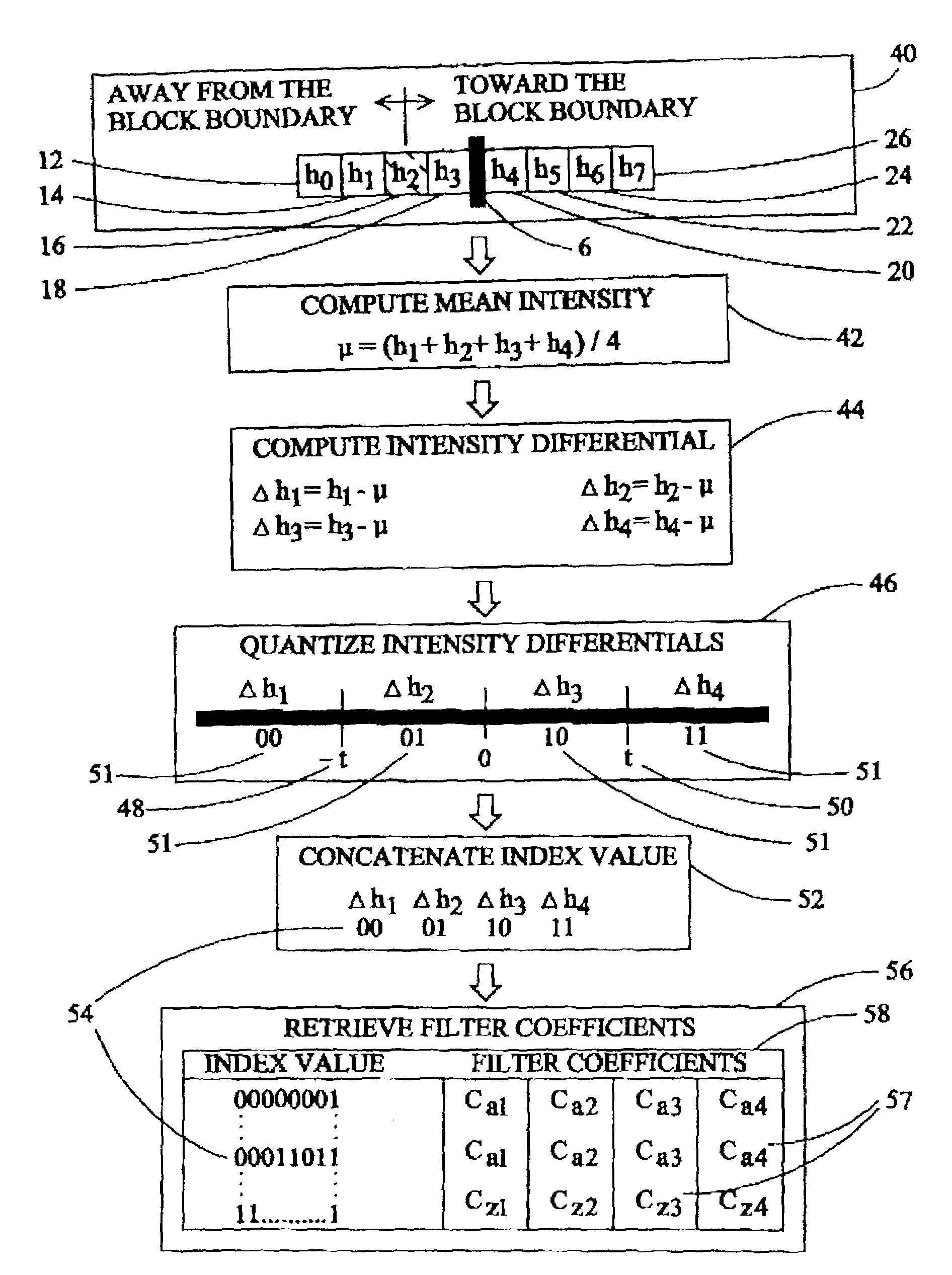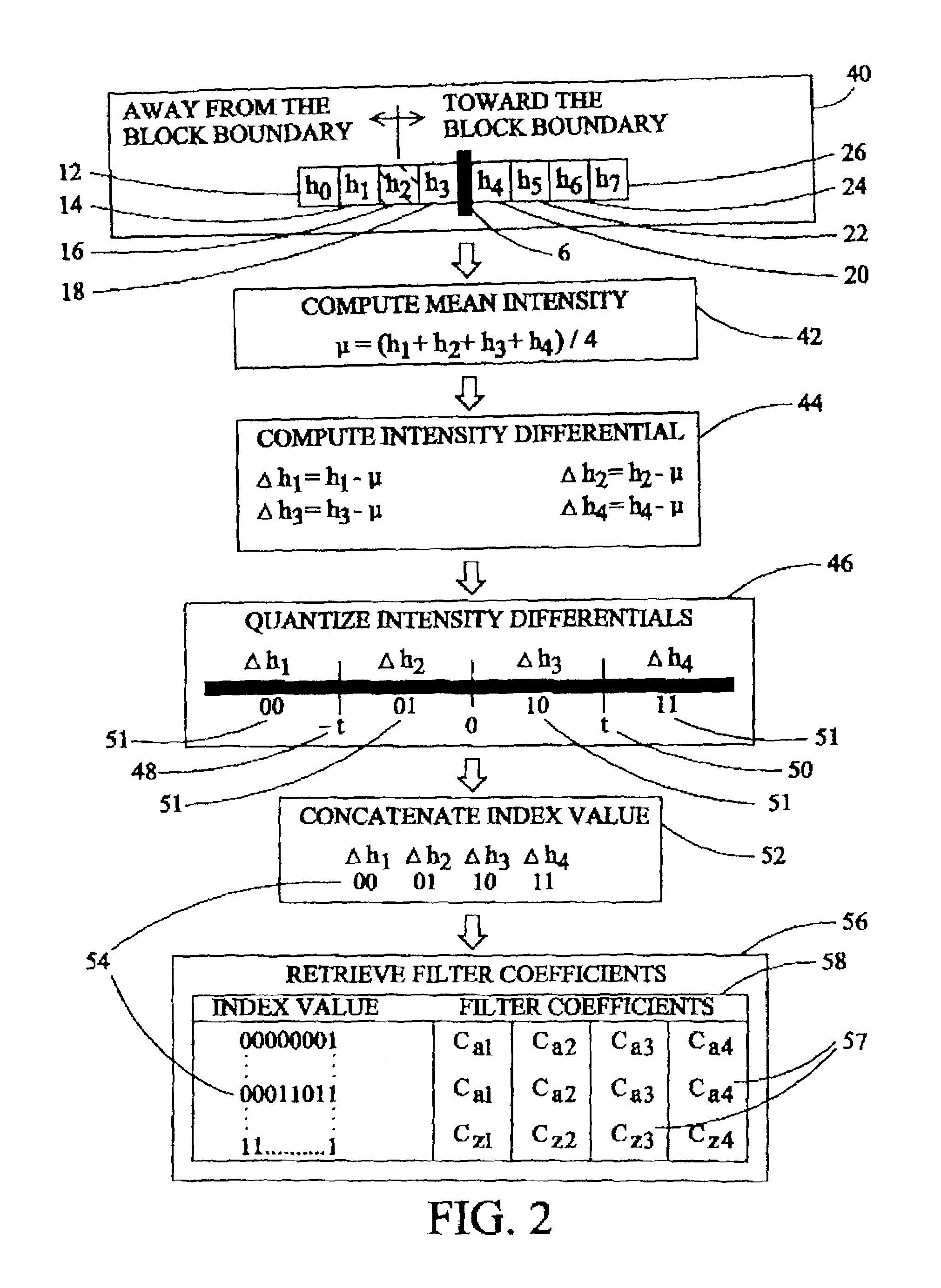Block boundary artifact reduction for block-based image compression
a block-based image and artifact reduction technology, applied in the field of digital image reproduction, can solve the problems of inability to achieve digital transmission and storage of images, noticeable change in pixel intensity across the boundary between blocks of the reconstructed image, and inability to achieve and improve block boundary artifact reduction. , the effect of reducing the abrupt transition between blocks
- Summary
- Abstract
- Description
- Claims
- Application Information
AI Technical Summary
Benefits of technology
Problems solved by technology
Method used
Image
Examples
Embodiment Construction
[0016]Many digital image compression schemes, such as the ISO “JPEG” specification for still images and the ISO “MPEG” specification for video, rely, at least in part, on block-based image compression. Referring to FIG. 1, the image is divided into a series of two dimensional areas or blocks 2, indicated by a bracket, and processing proceeds on a block-by-block basis. A common size processing block is eight pixels 4 in height by eight pixels 4 in width. Following transmission or storage, the image is reconstructed by reversing the process to decompress the image on a block-by-block basis. Data compression efficiency can be enhanced by discarding some information related to the image which is considered unnecessary for a viewer's appreciation of the reconstructed image. The discarded information is generally related to intermediate or higher frequency components of the data which describe minor details of the image. With block-by-block compression techniques, a part of the discarded ...
PUM
 Login to View More
Login to View More Abstract
Description
Claims
Application Information
 Login to View More
Login to View More - R&D
- Intellectual Property
- Life Sciences
- Materials
- Tech Scout
- Unparalleled Data Quality
- Higher Quality Content
- 60% Fewer Hallucinations
Browse by: Latest US Patents, China's latest patents, Technical Efficacy Thesaurus, Application Domain, Technology Topic, Popular Technical Reports.
© 2025 PatSnap. All rights reserved.Legal|Privacy policy|Modern Slavery Act Transparency Statement|Sitemap|About US| Contact US: help@patsnap.com



